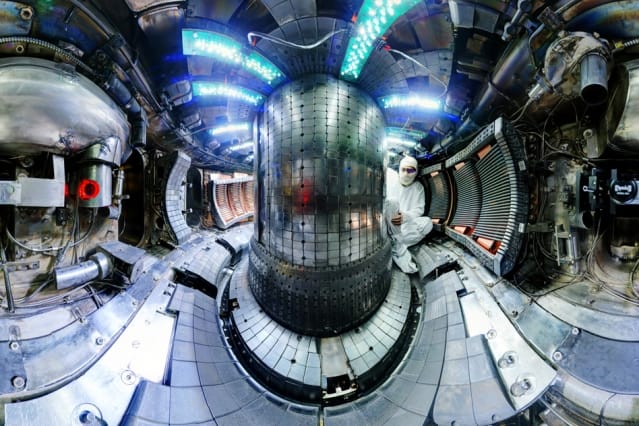
Located at MIT’s Plasma Science and Fusion Centre, Alcator C-Mod uses a high-magnetic field approach to contain the superheated plasma required for nuclear fusion. The amount of power produced by tokamaks increases with the square of the pressure, so doubling pressure would lead to a fourfold increase in power output.
“This is a remarkable achievement that highlights the highly successful Alcator C-Mod program at MIT,” said Dale Meade, former deputy director at the Princeton Plasma Physics Laboratory, who was not directly involved in the experiments.
“The record plasma pressure validates the high-magnetic-field approach as an attractive path to practical fusion energy.”
The previous record of 1.77 atmospheres - set by Alcator C-Mod in 2005 - was eclipsed on September 30, with the MIT team achieving a plasma pressure of 2.05. The record also marked the final time the 23-year-old tokamak will operate, with the US Department of Energy (DoE) diverting funds away from the project to support the ITER fusion programme in France. ITER will be roughly 800 times the size of Alcaor C-Mod, but will operate at a lower magnetic field. The DoE expects ITER to achieve pressures of 2.6 atmospheres when fully operational in 2032.
While setting the new record, which represented a 15 per cent improvement on the 2005 benchmark, the temperature inside Alcator C-Mod reached over 35 million degrees Celsius, about twice as hot as the sun’s core. The plasma produced 300 trillion fusion reactions per second and had a central magnetic field strength of 5.7 tesla. It carried 1.4 million amps of electrical current and was heated with over four million watts of power. The reaction occurred in a volume of approximately one cubic metre, with the plasma lasting for two full seconds.




Swiss geoengineering start-up targets methane removal
No mention whatsoever about the effect of increased methane levels/iron chloride in the ocean on the pH and chemical properties of the ocean - are we...